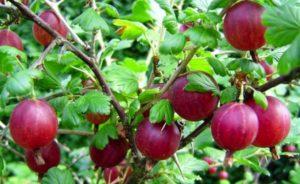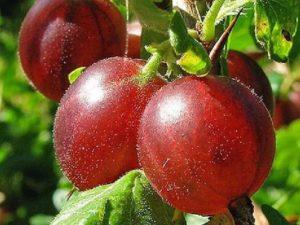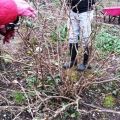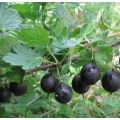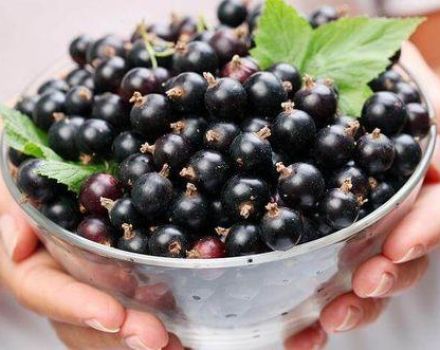When can you transplant gooseberries to a new place, in spring or autumn, and how correctly
When to transplant gooseberry bushes so that they can endure this procedure as painlessly as possible and quickly adapt to a new place, the main question is when it is necessary to transfer an adult bush. After all, a healthy bush that brings a bountiful harvest may die or it will hurt for a long time if the basic requirements of transplanting are not followed.
Why is it necessary to transplant gooseberry bushes
There are several reasons why you need to move the gooseberry bush to a new location:
- redevelopment of the site in connection with construction work, landscape design or planting of other crops;
- an incorrectly chosen place initially (damp, cold, without proper lighting), respectively, the gooseberry does not bear fruit well, is sick, the berries are of poor quality;
- crops in the neighborhood have grown and do not allow the bush to fully develop, or the shrub interferes with other plants, and it is very difficult to transfer them;
- the bush is old and requires rejuvenation.
When is it better to transplant gooseberries
Gooseberry bushes tolerate a change of place relatively easily, subject to agrotechnical rules. You can transplant both in spring and autumn. Summer replanting is carried out when absolutely necessary.
In a summer emergency transplant, the gooseberry will hurt, making it difficult to repair the damaged root system. There is a risk of plant death.
In the spring
If the autumn planting is not done, you can carry out this procedure in the spring. It is important not to miss the deadline. The problem is that gooseberries wake up very early. Already with the onset of sunny days, sap flow begins. The kidneys swell and open quite quickly. In this state, it is no longer desirable to touch the bush. He will not tolerate a transplant, he will become ill, there will be a noticeable lag in development, since all forces are directed to the formation of the ground part, and not the root.
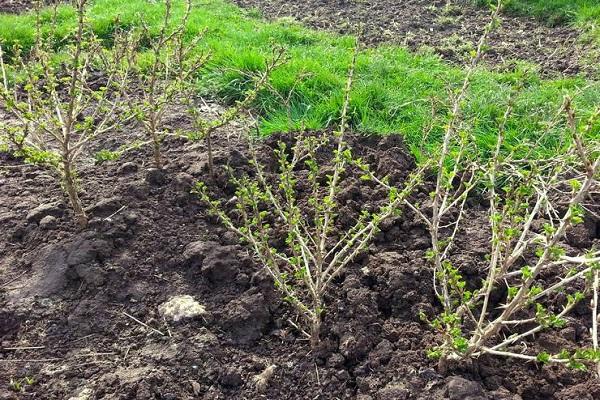
The most ideal month of spring is March when the snow has melted. In cold regions, this period is shifted to early April. Often the soil is still frozen, and the bush is difficult to get out of it. It is important to combine the moment when the ground thawed, and active sap flow has not yet begun.
In autumn
Still, transplanting gooseberries to a new place in the fall is the most optimal option, since the growing season is ending, fruiting is over, and preparations for winter have begun.The process of sap flow stops, the growth of the ground part stops. The bush that has passed into the stage of inertia tolerates transplanting well, since all efforts are directed to strengthening the root part.
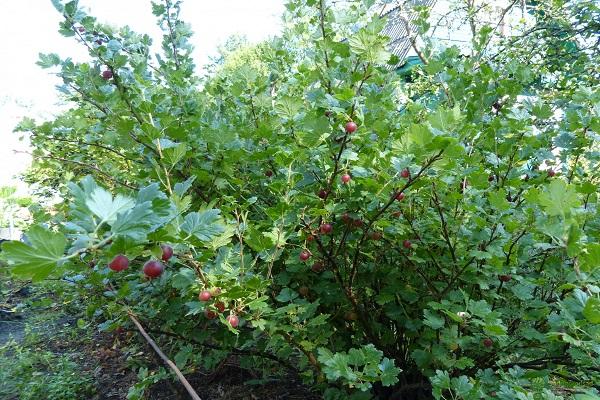
The second half of September was recognized as the ideal time for transplanting, and in places with severe northern conditions, a little earlier - the end of August. In warm areas, the transplant can be carried out at the end of October. The benchmark is made on the onset of frost: at least 5 weeks must remain before them. The plant must have time to adapt to the new place.
How to transplant gooseberries correctly: sequence of work
In order for the gooseberry to survive the transplanting process as painlessly as possible, it is recommended to comply with simple, but very important requirements. The further development of the plant and its fruiting will depend on this.
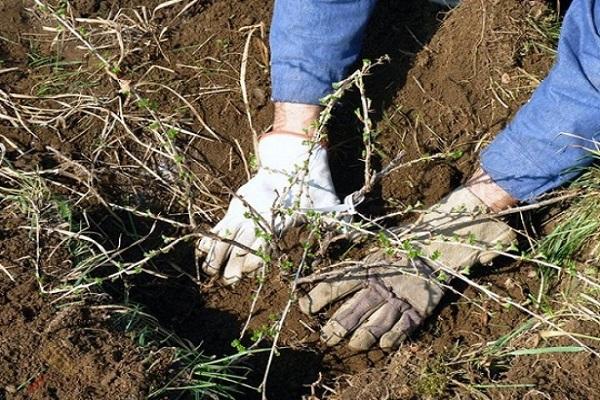
Requirements for soil and feeding
Gooseberries are planted in humus loamy soil with medium density, neutral acidity (pH 6.5–7). The heavy clay composition of the soil must be loosened with sand. A clay substrate must be added to sandy soil to ensure moisture capacity. The acidity level can be tested with litmus test. If necessary, add deoxidizing agents to the soil: dolomite flour, fluff lime.
It is not recommended to plant gooseberries after raspberries, currants, they have common harmful insects and viral and fungal diseases.
Preparing the landing pit in a new location
The moment of choosing a place for a transfer remains decisive. Development and fruiting depends on this. Therefore, the choice of a new site of growth must be approached responsibly.
It should be a well-lit place, free from cold and through winds. The site should be hidden from the wind by a house or other building. Avoid wetlands and close water tables. Excessive moisture will provoke the spread of fungal diseases and rot. Dig up the site beforehand, remove weeds.
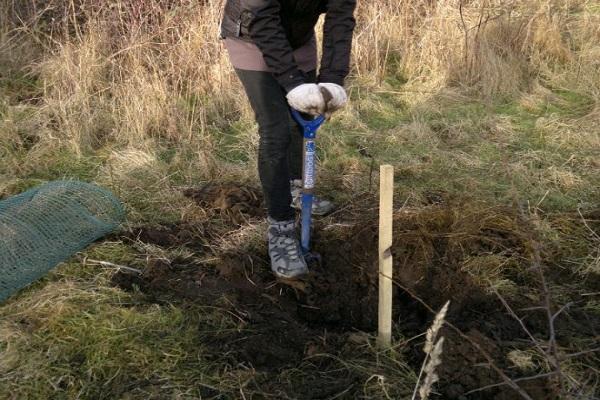
Preparing a gooseberry bush for transplant
Before the direct transplant, you need to prepare the bush, make a few pruning:
- clean up outdated, broken, damaged and unnecessary branches;
- leave 6-9 young branches, shorten them by a third.
You need to prepare the planting hole several days before transferring the bush. The depth should be at least 0.55-0.6 m. The diameter depends on the size of the root system. The pit is made slightly larger than the root part.
Recommendations:
- remove the first layer, it is used to prepare the soil mixture;
- lay out drainage on the bottom of the finished pit, the layer is made up to 10 cm thick, crushed stone, broken brick is used;
- fill half of the pit with soil mixture: earth and humus (in equal shares), superphosphate (45 g), potassium sulfate (35 g);
- a day before planting, pour water into the pit, about 5 buckets, the number of buckets depends on its size.
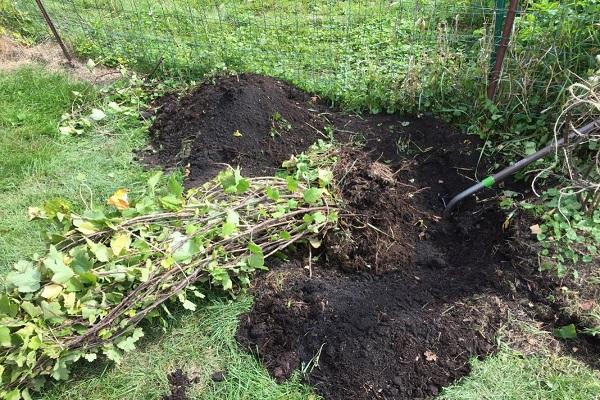
Planting a bush in a new place
The landing pattern consists of the following algorithm of actions:
- Dig in the bush in a circle, the distance from the base is not less than 0.3 m. Cut off the thick protruding roots with a sharp shovel.
- Using a pitchfork, a crowbar, loosen the bush, carefully remove it from the ground, preserving as much as possible the root earth lump.
- Place the gooseberries on a piece of cloth or plastic, transfer to a new pit.
- Gently lower the plant into the hole, placing it so that the root collar is 50-70 mm below the ground.
- Spread the roots evenly over the bottom of the pit.
- Fill with the rest of the soil mixture, thoroughly compact, filling all the voids. It is recommended to cover it in layers, each gently pressing down.
- Drizzle abundantly, at least 3 buckets.
- If the soil has subsided, add more soil.
- Mulch the soil.
If desired, an adult gooseberry bush can be divided into several bushes during transplantation. For this, the roots are freed from the root soil, the bush is divided. Each should have a main root and additional clauses.
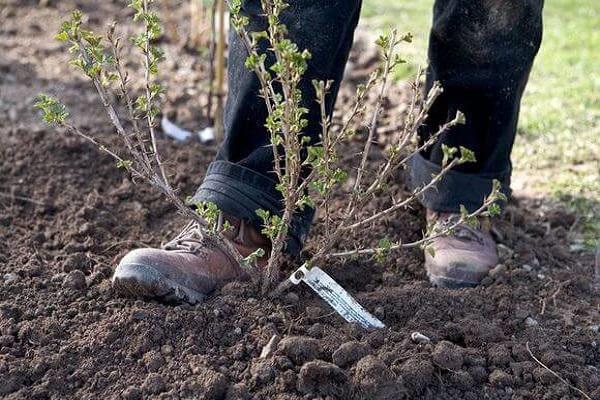
The main mistakes when transplanting
Sometimes inexperience and mistakes can lead to illness or death of the bush. Common mistakes when transferring a bush:
- Transplanting an adult bush, like a seedling. Keeping an earthy coma during transplanting significantly increases the plant's chances.
- Neglect of rooting agents. At the moment, preparations have been developed that help the plant to strengthen the root part.
- Use of cold water. Gooseberry is a thermophilic plant. For irrigation, a liquid is used with a temperature of at least +18 aboutC. Cold water, especially on hot days, is detrimental to the plant. Large changes in temperature will negatively affect the culture.

Caring for gooseberry bushes after transplanting
It is important not only to transplant the gooseberries to another place, but also to provide post-plant care. Thanks to certain activities, the bush will quickly transfer stress and get used to a new place. Care differs according to the transplant season.
When replanting in autumn, care is reduced to ensuring proper watering. At the trunk circle, the soil should be moistened. It is necessary to take into account weather conditions, if it rains often, the number of irrigations is adjusted. Gardeners recommend covering the soil with a sheet of roofing material or film. At the onset of frost, the soil must be mulched thoroughly. You can use dry foliage, sawdust, chopped bark, hay, humus, cones, needles.
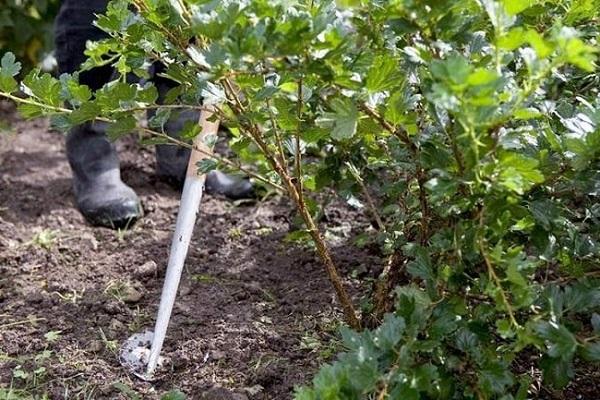
5-7 days after transplanting, treat the bush with Bordeaux liquid and Karbofos, since the plant's immunity is weakened.
In the spring, when leaves bloom on the bush, you need to feed it with urea in the process of loosening. Potassium and phosphorus preparations are also introduced, since a lack of them in the soil will lead to a burn of the leaf plates.
After the spring transplant, it is also important to monitor the humidity and prevent the damaged root part from drying out. Abundant, timely watering is important, at least once a week, using about 2 buckets of water. When growth begins, it is recommended to feed with nitrogen-containing preparations:

- organic matter: bird droppings or mullein;
- mineral: nitrate, urea, ammonium sulfate.
Care consists in loosening the soil, removing weeds. The procedure is carried out carefully, not going below 3 cm, so as not to injure the roots.
Subject to the recommended transplantation requirements, the plant will quickly take root and adapt in a new place and subsequently will delight the owner with a bountiful harvest and delicious berries.
